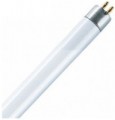Bulb
The type of bulb that the light bulb is equipped with.
—
Transparent. Transparent flasks practically do not reduce the brightness of the light, but the light itself is sharper than from frosted lamps. They are considered optimal for lighting fixtures with transparent shades, as well as for crystal chandeliers and other similar fixtures, the design of which is designed for a beautiful play of light on corners and edges. In addition, in halogen lamps (see "Type"), other types of bulbs are practically not used — for a number of technical reasons.
—
Matte. Frosted flasks have a soft glow — due to a slight decrease in brightness compared to transparent ones. They are recommended for use in lamps with frosted shades, as well as for lighting children's rooms: the light attracts the attention of small children, and it is safer to look at a frosted light bulb. Also note that non-coloured fluorescent lamps (see "Type") are, by definition, made opaque.
—
Coloured. Flasks painted in a certain colour provide a glow of the corresponding shade. Usually, such lamps are used for decorative purposes, but other uses are possible — for example, for colour temperature correction in a photo studio. In addition, this category also includes the so-called. "black light lamps" — lamps that emit mainly ultraviolet light and very faintly glow in the visible range. Ult
...raviolet from such lamps is relatively safe for humans, while it makes various substances and materials glow brightly. This effect is used both for entertainment and decorative purposes, and in quite practical areas of activity — chemistry, medicine, forensic science, etc.Luminous flux (brightness)
The conditional "amount of light" produced by a light bulb in normal mode. The higher the luminous flux, the brighter the light and the more clearly the illuminated scene will be visible. Note that lumen values are used primarily for special purposes; in everyday life, the estimation of brightness by the analogue of LON is more popular (see above), and here the ratio is as follows:
— 40 W analogue LON corresponds to a brightness of 370 lm;
— 60 W — 550 lm;
— 75 W — 800 lm;
— 100 W — 1200 lm;
— 150 W — 1900 lm;
— 200 W — 2700 lm.
Note that the principle "the more the better" in the case of the brightness of light bulbs is not always applicable. And the point here is not only energy consumption: too bright light is harmful to the eyes, leads to rapid fatigue and psychological discomfort.
Colour temperature
This parameter describes the general coloration of the light of the lamp in "warm" or "cold" tones.
Initially, colour temperature is the temperature (in kelvins) of an object at which it begins to glow in a certain colour. Interestingly, the higher its value, the more “cold” the colour is: for example, the dull red glow of a heated metal corresponds to 800-1000 K, and the bluish-white tint of a fluorescent lamp corresponds to about 6000 K.
The temperatures encountered in modern light bulbs can be described approximately as follows:
2700 – 3000 K — "warm" white light, similar to traditional incandescent lamps;
3000 – 3500 K — "slightly warmer than average";
3500 – 6000 K — neutral white, similar to daylight;
More than 6000 K — cold shades of white.
Note that the colour temperature is not directly related to the quality of colour reproduction provided by the light of a particular lamp — much depends on the features of its design and, accordingly, the spectral colour balance.

